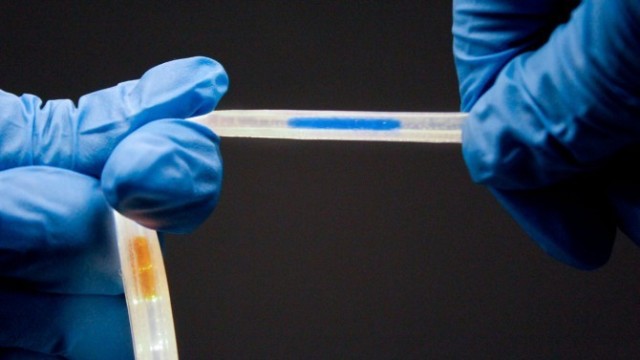Researchers from Cornell University (USA) have created a fiber-optic sensor that measures tactile interactions using light. It combines inexpensive LEDs and dyes, resulting in an elastic "skin" that recognizes bending, deformation, and pressure. This sensor can give soft robotic systems – and people who use augmented reality technology-the opportunity to experience the same rich tactile sensations that a person experiences through their skin, [...] the press service of the University reports. The scientists described their development [...] in detail in the journal Science.
The authors drew inspiration from distributed fiber-optic sensors based on silicon dioxide and developed a stretchable light guide for multimodal sensing (SLIMS). This long tube contains a pair of polyurethane elastomer rods. One is transparent, the other is filled with absorbing dyes in several places and connected to the led. Each rod is connected to a red-green-blue sensor chip to register changes in the optical path of light. As the path of light changes, so does the power of tactile touch.

To test how the new device works, the researchers printed a glove on a 3D printer – and ran a sensor along each finger of the glove. The glove is powered by a lithium battery and is equipped with Bluetooth, so it can transmit data to basic software that reconstructs the glove's movements and deformations in real time.
